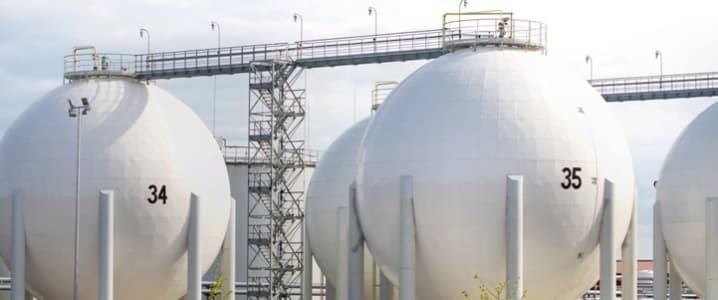The Paris-based International Energy Agency (IEA) said in its Gas 2018 annual report on Tuesday that China will become the world’s top natural gas importer, boosted by liquefied natural gas (LNG) imports, by next year. The increase comes as China replaces dirtier burning coal used for power generation with cleaner burning natural gas. Per government mandate, gas must make up around 10 percent of the country’s power generation energy mix by 2020, with further earmarks by 2030.
According to the IEA report, Chinese demand for natural gas will rise by almost 60 percent between 2017 and 2023 to 376 billion cubic meters (bcm). This includes a rise in its LNG imports to 93 bcm by 2023 from 51 bcm in 2017. Global LNG imports will rise to 505 bcm by 2023 from 391 bcm in 2017, an increase of some 114 bcm.
The Asia-Pacific region, which accounts nearly two-thirds of all global LNG demand, will hold that lead going forward. When all of Asia is taken into account, according to the IEA, LNG sales in Asia will rise to 75 percent of all LNG sold globally from 72 percent last year.
Global natural gas production is forecast to increase at 10 percent by 2023 to 4.12 trillion cubic meters (tcm) with the U.S. contributing by far the largest amount to growth of 160 bcm extra gas in that period, according to the IEA.
A large part global LNG production will come from three top players, the US, Qatar and Australia, with the US projected to become the second largest LNG exporter by 2023 with 101 bcm, pushing Australia into third place with 98 bcm and Qatar as the top exporter at 105 bcm. LNG from the three countries will account for 60 percent of global sales of 505 bcm.
Significant take-aways
The IEA report has several significant take-aways for global gas and LNG markets. First, exorbitant gas demand growth from China has already revolutionized gas markets and will continue to do so in both the mid to long term. Related: The OPEC Agreement Puts A Floor Under Oil Prices
Japan is the world’s top LNG importer, followed by China, which bypassed South Korea at the end of last year, then South Korea, India and Taiwan.
Increased Chinese gas demand, with LNG representing a large part of the demand growth, has caused most analysts to shorten the forecast of how long the ongoing oversupply scenario in global LNG markets would last. Until late last year when China caught markets by surprise by ramping up gas usage ahead of winter more than expected, most forecasted the supply glut to persist to at least 2023 or even longer.
Now, amid Chinese demand, the ongoing LNG supply glut will likely be shorted by at least one or even two years. LNG demand growth in South Asia, predominantly India and Pakistan, and with more demand also coming from the Middle East, are also impacting markets. Emerging markets in Southeast Asia, predominately Vietnam, and the Philippines will also soak up more supply by the start of the decade, while Thailand will continue to procure more LNG to offset its own natural gas production declines.
Some are already forecasting a once hard to imagine scenario suggesting that China could bypass Japan as the world’s top LNG importer by 2028, or even sooner.
Long term contracts also reconsidered
Just a year ago, Japan’s Fair Trade Commission ruled that restrictive destination clauses in long term LNG supply contracts were anti-competitive. These clauses, one of the mainstay LNG contract stipulations for most deals restricted the diversion or reselling of cargoes. After the ruling, Japan as well as other buyers indicated that the era of long term supply contracts were coming to an end, a quandary for LNG producers that need long term contract to finance massive capital-intensive LNG production and export facilities. Related: Norway’s Oil Discoveries On Track For Best Year Since 2010
Now, however, with LNG demand growth gaining strength again and with some buyers starting to worry about a shortage of the super-cooled fuel starting next decade, there is renewed interest in longer term contracts once again. However, long term contracts will be more flexible, including the removal of destination clauses, as well as other prohibitive stipulations.
LNG deals going forward will see both robust spot and mid-term trading as well as long term deals still being reached, allowing the fuel to trade with more transparency than earlier years, and also trading more like a real commodity, in some instances similar to crude oil and iron ore.
More anti-trust concerns
The European Commission (EC) said last week that it would open investigations into restrictions to the free flow of gas sold by Qatar Petroleum in Europe. The aim of the EC investigation is to see if Qatar Petroleum LNG contracts contain any anti-competitive agreements or concerted practices, such as denying the importer of the gas in one territory or the right to resell into another territory.
It’s likely that the EC could issue a similar ruling as the one reached last year by Japan’s Fair-trade Commission, with new contracts falling under its ruling, and likely opening up the renegotiation of existing contracts. Qatar is the largest LNG exporter into Europe, though US-LNG producers are eager to also compete for LNG market share and to also chip away at Russia’s gas monopoly on the continent.
By Tim Daiss for Oilprice.com
More Top Reads From Oilprice.com:
- Oil Prices Spike Despite Saudi Plan For Unprecedented Oil Export Surge
- The Bullish Truth Of OPEC’s Agreement
- WTI-Brent Spread Narrows On Canada Oil Crisis



















Peak oil demand will be clearly visible on the horizon by 2023, where is this reasonably priced LNG going to come from?